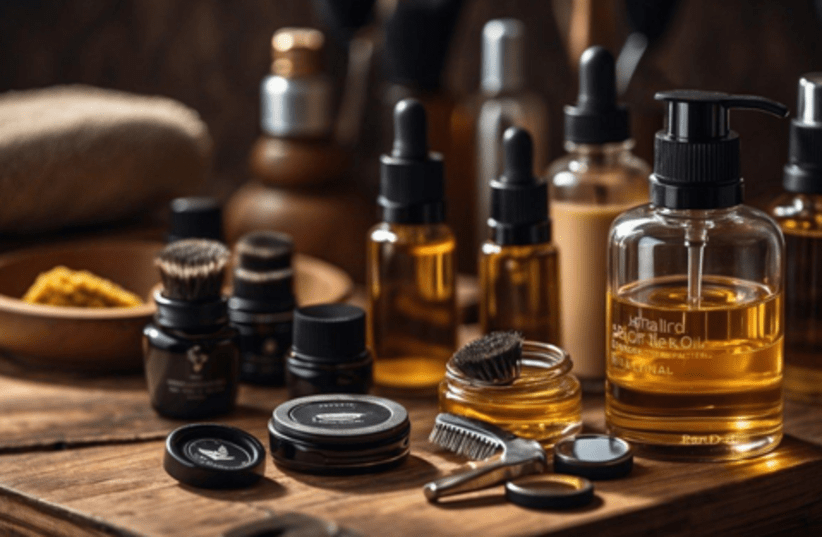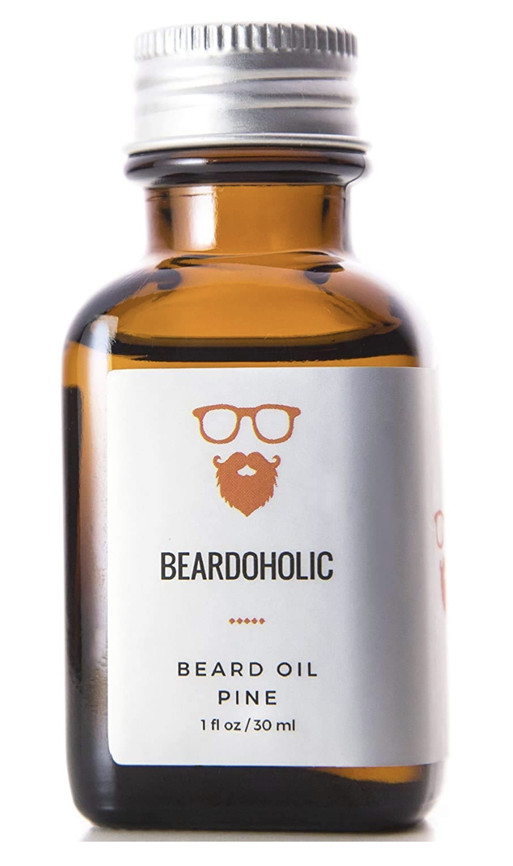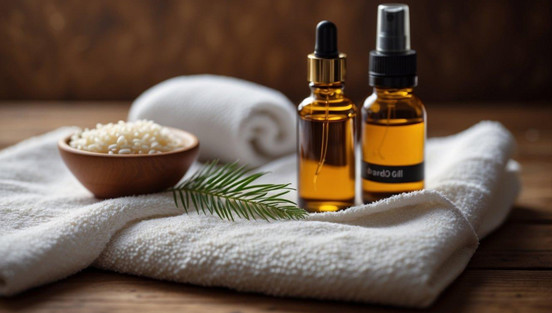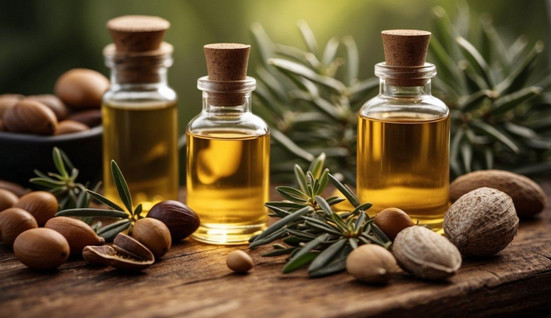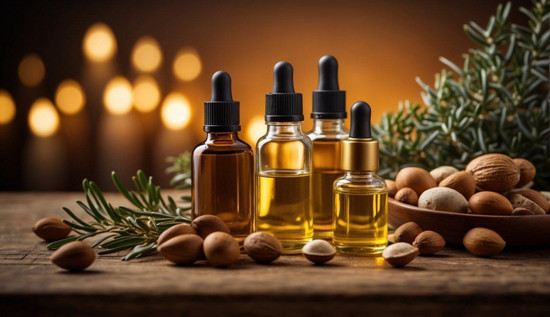Managing a patchy beard can be challenging, but the right beard oil can make a significant difference. Often, patchiness can be a result of various factors such as genetics, hormonal imbalances, or even poor grooming practices. Beard oils are crafted to nourish the skin and hair, potentially creating the conditions necessary for improved growth and a fuller appearance.
Choosing the best beard oil for a patchy beard involves understanding the ingredients that promote hair growth and skin health. It's not just about the immediate aesthetic enhancement, but also about long-term beard care. Natural oils like jojoba, argan, and castor are often key components, alongside essential oils that bring both scent and beneficial properties. Consistent application and appropriate grooming techniques are crucial for achieving the best results.
In a hurry? The best beard oil for your patch beard is:
Beardoholic beard oil for patchy beard
Understanding Patchy Beards
In addressing a patchy beard, it's essential to comprehend the underlying causes and the fundamental hair growth process. Armed with this knowledge, you'll be more equipped to use beard oils and tools like a beard shaping tool effectively.
Causes of Patchiness
Patchiness in beards can occur due to various factors:
- Genetics: Your genes play a critical role in determining beard thickness and patchiness.
- Hormones: Levels of testosterone and dihydrotestosterone (DHT) influence beard growth, with imbalances often leading to sparse areas.
- Nutrition: A diet lacking in essential nutrients can impede your beard's ability to grow evenly.
- Stress: Elevated stress levels can lead to hair loss, impacting the beard's density.
- Skin Conditions: Issues such as eczema or fungal infections can cause patches in facial hair.
Hair Growth Cycle
Your beard hair follows a natural growth cycle with three distinct phases:
- Anagen (Growth Phase): This is when your beard is actively growing. It can last several months to years, and the length of this phase determines how long your beard will grow.
- Catagen (Transition Phase): Lasting a few weeks, hair follicles shrink and hair growth slows.
- Telogen (Resting Phase): The final phase, spanning months, is when hairs fall out and new ones begin to grow in.
Understanding these cycles can inform when and how to use products like beard oil and tools such as a beard shaping tool to maintain a well-groomed appearance despite patchiness.
The Role of Beard Oil
Beard oil plays a crucial part in maintaining the health of your beard by providing essential hydration and nutrients. It is also key to enhancing beard growth, especially in patchy areas.
Hydration and Nourishment
Your beard hair requires consistent hydration to stay soft and healthy. Using beard oil, you deliver:
- Moisture: Essential oils like jojoba and argan oil mimic your skin's natural oils, providing deep hydration.
- Nutrients: Vitamins A, E, and antioxidants protect and nurture skin and hair.
Example Routine
Steps | Description |
1. | Wash your beard. |
2. | Apply a few drops of oil. |
3. | Use a beard shaping tool to evenly distribute the oil and style your beard. |
Stimulating Growth
Regular application of beard oil can help stimulate growth by:
- Promoting Blood Flow: Essential oils like peppermint can invigorate the skin beneath your beard, increasing circulation.
- Reducing Breakage: The oil smoothens the hair cuticle, preventing snags and minimizing breakage.
Quick Tips
- Apply oil after showering for better absorption.
- Consistently use beard oil in combination with a healthy diet to support growth.
Selection Criteria for Beard Oil
When selecting the best beard oil for a patchy beard, it is vital that you focus on the quality of ingredients, how well the oil is absorbed, and whether the scent fits your personal preference.
Ingredients Quality
Natural Oils: Look for beard oils that contain natural carrier oils such as argan, jojoba, or coconut oil, which are known for their nourishing properties.
Essential Oils: These provide additional benefits and aromas. Effective oils for beard growth include peppermint, rosemary, and eucalyptus oil.
Vitamins and Nutrients: Beard oils enriched with vitamins E and B can help to promote healthy hair growth and durability.
Absorption Rate
Lightweight Formula: Oils with a high absorption rate won't leave a greasy residue on your beard. Ingredients such as grapeseed or sweet almond oil are ideal for fast absorption.
Non-Comedogenic: Choose oils labeled as non-comedogenic, meaning they won't clog pores, which is important for preventing skin irritation beneath your beard.
Scent
Personal Preference: Since you'll wear the beard oil daily, pick a scent that you find appealing and not overpowering. Common scents include woodsy, citrus, or minty notes.
Longevity: Consider how long the scent lasts. If you prefer a subtle fragrance, go for oils that offer a mild scent that fades appropriately without reapplication.
Top Beard Oils Reviewed
When selecting a beard oil to enhance growth in patchy areas, consider the following high-quality options:
Our top pick is Beardoholic beard oil for patchy beard
Pure Organic Ingredients: Conditions and softens skin and beard, promoting healthy beard growth. A perfect option for your patchy beard
Styling: You will style your beard fast and easy. Leaving your beard feeling clean and soft.
Their formula helps you to keep your hair neat, smooth, and tangle-free. While also giving it a hold and shaping power.
Beardoholic beard balm is truly the best beard balm on the market.
Honest Amish Classic Beard Oil
- Ingredients: Includes a blend of organic oils such as argan, jojoba, and almond
- Benefits: Promotes beard health by nourishing the skin and contributes to the reduction of itchiness
- User Experience: Well-received for its conditioning properties and natural scent
Viking Revolution Beard Oil
- Ingredients: Infused with argan and jojoba oils, free from synthetic fragrances
- Benefits: Softens beard hair and supports even growth
- User Experience: Favored for its light texture and effectiveness on tough beard textures
Beard Oil | Ingredients | Key Benefit | Size |
Cremo Beard Oil | Argan, jojoba, sunflower, and more | Reduces breakage, consistent use aids patchiness | 1 oz |
Beardoholic Beard Oil | Argan, castor, grapeseed, and more | Strengthens follicles, supports thickening | 1 oz |
Beardbrand Beard Oil
- Ingredients: Crafted with a mixture of jojoba, almond, and grapeseed oils
- Benefits: Minimizes skin irritation and moisturizes the beard
- User Experience: Known for its subtle scent and deep moisturizing capabilities
Ranger Grooming Co. Fragrance-Free Beard Oil
- Ingredients: Pure organic jojoba and argan oil only
- Benefits: Ideal for sensitive skin, hypoallergenic and non-scented
- User Experience: Popular for those preferring a fragrance-free option that's gentle on skin
When using beard oil, attentively apply a few drops to your hand, rub together, and work it through your beard after showering. This routine helps encourage healthier growth and may help fill in patchy areas over time. Remember to choose a product based on your skin type and fragrance preference.
Application Techniques for Maximum Effect
When applying beard oil to a patchy beard, your goal is to nourish the skin and promote even growth. Begin by selecting a high-quality beard oil suitable for your skin type.
Step 1: Clean Your Beard
- Wash your beard using a mild cleanser to remove any dirt or excess oil.
- Pat your beard dry with a towel.
Step 2: Apply Beard Oil
- Put 2-3 drops of beard oil in your palm. Rub your hands together to warm the oil.
- Use your fingertips to apply the oil to the patchy areas of your beard.
- Distribute the oil evenly across your beard and skin beneath.
Step 3: Use Tools for Even Distribution
- Utilize a wooden comb or a beard brush specifically designed for beards to further distribute the oil.
- For a wooden comb:
- Slowly comb through your beard to detangle and spread the oil.
- Start from the bottom and work up to the cheeks.
- For a black brush:
- Brush in the direction of hair growth to lay down stray hairs and smooth your beard.
Step 4: Styling
- Style as desired, subtly shaping the patchier areas without over-combing or brushing.
Tips:
- Apply beard oil right after showering for better absorption.
- A wooden comb can reduce static and help with blood circulation.
- Use the black brush to train your beard hairs over time, encouraging them to grow in the desired direction.
Complementary Grooming Tools
Selecting the best beard oil for a patchy beard can significantly improve your beard's appearance. However, incorporating the right grooming tools will enhance the benefits of your beard oil by keeping your beard well-shaped and neat.
Using Scissors for Trimming
When you notice uneven growth or stray hairs, scissors are essential for precise trimming. Opt for a quality pair designed for beard grooming to ensure a clean cut without causing split ends.
- Benefits:
- Allows for targeted shaping.
- Prevents over-trimming, common with electric trimmers.
The Importance of a Good Comb
Regular combing with a wooden comb can help distribute beard oil evenly, leading to better coverage and absorption, especially in patchy areas.
- Characteristics to look for:
- Fine-toothed: for neat styling and removal of knots.
- Wide-toothed: for gentle detangling.
Combining these tools with your beard care routine ensures that you not only nourish but also maintain the desired shape and neatness of your beard.
Designing Your Beard Shape
When crafting the ideal beard shape for a patchy beard, strategic trimming is key. Your goal is to create an illusion of fullness while accentuating your natural beard line. Here’s how:
Define Your Neckline:
- Tilt your head back and imagine a line from behind your ear to the opposite side. This is your neckline.
- Shave everything below this line to maintain a clean look.
Carve Your Cheek Line:
- Use a beard shaping tool to define a line that complements your face shape.
- Aim for a natural curve or a straight line, depending on what suits you best.
Fill in the Blanks:
- Allow the denser areas of your beard to grow out, aiding in covering sparser regions.
- Contour the beard to blend the patches seamlessly.
Keep Your Beard Neat:
- Trim stray hairs to maintain the desired shape.
- Use beard oil regularly to soften and nourish the hair, making it appear thicker and healthier.
Beard Grooming Steps | Importance |
Define Your Neckline | Sets the foundation of a well-groomed beard. |
Carve Your Cheek Line | Frames your face and enhances shape precision. |
Fill in the Blanks | Utilizes longer hair to cover patches. |
Keep Your Beard Neat | Ensures ongoing neatness and presentation. |
Remember to use the beard shaping tool gently—avoid over-trimming, as more facial hair provides more options for achieving coverage. Your patchy beard can still look well-maintained and structured with the right approach and tools at your disposal.
Maintaining a Healthy Beard
When caring for a patchy beard, maintaining its health is crucial. Start with proper hygiene—wash your beard regularly with a gentle beard-specific shampoo to keep it clean without stripping essential oils. Next, use a high-quality beard oil to moisturize both your facial hair and the skin underneath.
Incorporate an organic beard balm in your grooming routine for several benefits. The comb evenly distributes oils throughout your beard, helps detangle hair, and reduces static that can make patchiness more noticeable. Wooden combs are also gentler on your skin than plastic alternatives.
Maintaining the shape of your beard is also essential. Use scissors over trimmers if you're dealing with a patchy beard, as they offer greater control to even out the length and snip away stray hairs without going too short. Regular trimming fosters healthy growth and can help in making your beard appear fuller.
Here’s a simple routine to follow:
- Daily:
- Wash with a beard wash
- Comb with a wooden comb
- Apply beard oil
- Weekly:
- Trim with scissors for shape
- Deep condition to keep hair soft
Implementing this routine encourages healthier growth, potentially minimizing patchy areas over time. Remember, the key to a well-maintained beard is consistency and the right tools.
Frequently Asked Questions
Selecting the right beard oil is crucial for improving the appearance of a patchy beard. Your concerns regarding ingredients, application, and styling for patchy beards are addressed below.
What are the key ingredients to look for in a beard oil for improving patchy beards?
For patchy beards, look for oils with jojoba, argan, and castor oils. These ingredients nourish the skin and hair follicles, promoting healthier beard growth.
How can beard oil contribute to the growth and thickness of a beard?
Beard oils moisturize the skin beneath the beard and provide nutrients to the hair follicles, which can lead to improved growth patterns and potentially thicker hair strands.
What are effective methods to help fix a patchy beard?
Use beard oil daily, maintain a healthy diet, exercise regularly, and practice good sleep habits to support natural hair growth. Patience and consistent grooming habits are also key.
Is it possible for a naturally patchy beard to become fully filled in over time?
For some men, proper care and time can lead to a fuller beard, but genetics also play a significant role in growth potential. Consistent use of beard oil can enhance appearance but not change genetic predispositions.
How often should you apply beard oil to promote optimal beard growth?
Apply beard oil once or twice daily, depending on your skin's dryness and the local climate, to maintain moisturized skin and nourished hair.
Are there any specific beard styles that work well for men with patchy beards?
Shorter beard styles, such as a stubble or strategic shaping that play to denser growth areas, can create the appearance of a fuller beard and can be more forgiving for patchiness. This is a sponsored article. The article should not be considered as advice.
